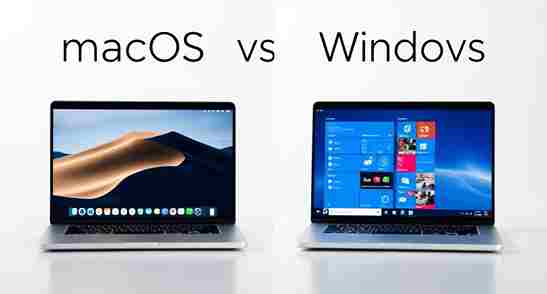Real-Time Edge AI: The Future You Can Experience Now
In the rapidly evolving world of technology, Real-Time Edge AI is emerging as a groundbreaking innovation that is transforming the way consumer devices operate. Unlike traditional cloud-based AI, Real-Time Edge AI processes data locally on devices, offering lightning-fast responses and smarter interactions. This shift is not just a technological upgrade — it’s the future you can experience now.
What Is Real-Time Edge AI?
At its core, Real-Time Edge AI means running artificial intelligence algorithms directly on devices like smartphones, wearables, smart cameras, and IoT gadgets. Instead of relying on cloud servers to process data, these devices handle computations locally. This significantly reduces delays, allowing for faster responses to user commands and real-world events. Because data stays on the device, privacy is greatly improved, lowering the risk of sensitive information being exposed or intercepted.
Another key benefit is reliability. Devices powered by this technology can operate smoothly even without a constant internet connection. Whether it’s a smart security camera detecting motion or a wearable tracking health metrics, processing happens instantly on the device itself. By pushing AI to the edge of the network, this approach delivers smarter, quicker, and more secure experiences in everyday consumer electronics.
Why Real-Time Edge AI Matters
Traditional AI models rely heavily on cloud computing, where data is sent to remote servers for processing and then returned to the device. This process can cause delays and depends on a stable, continuous internet connection. By shifting AI processing directly onto the device itself, these issues are eliminated, enabling faster responses and uninterrupted functionality even without internet access.
- Instant Processing: Since data is analyzed on the device itself, Real-Time Edge AI delivers immediate results, crucial for applications like autonomous driving, augmented reality, or real-time health monitoring.
- Improved Privacy: Sensitive data never leaves your device, meaning Real-Time Edge AI significantly lowers privacy risks.
- Reduced Bandwidth Use: By minimizing data transfer to the cloud, Real-Time Edge AI reduces network congestion and lowers operational costs.
How Real-Time Edge AI Is Changing Consumer Devices
Consumer electronics are becoming smarter and more responsive thanks to on-device artificial intelligence. Here are some key areas where this technology is making a big impact:
Smartphones and Tablets
Modern smartphones use on-device AI for facial recognition, voice assistants, and camera enhancements. This lets users unlock devices instantly, process photos faster, and get more accurate voice commands—no cloud needed.
Wearables and Health Tech
Wearables like fitness trackers and smartwatches use on-device AI to monitor heart rate, sleep, and other health data in real time. This local processing delivers timely alerts and personalized insights while keeping data secure.
Smart Home Devices
Smart speakers, security cameras, and thermostats use on-device AI to respond fast to voice commands and changes in the environment. For example, smart security cameras can instantly detect unusual activity and alert homeowners right away.
Autonomous Vehicles and Drones
In autonomous driving and drone navigation, every millisecond counts. On-device AI processes sensor data instantly, enabling quick decisions to avoid accidents or optimize routes—no network needed.
The Technology Behind Real-Time Edge AI
This technology’s success relies on advancements in both hardware and software:
- Powerful Edge Processors: Specialized chips like AI accelerators and neural processing units (NPUs) enable efficient, high-speed on-device AI computations.
- Optimized AI Models: Developers design lightweight AI models tailored for edge devices, balancing accuracy with resource efficiency.
- Energy Efficiency: Battery-friendly designs ensure Real-Time Edge AI runs continuously without draining device power.
Challenges and the Road Ahead
While Real-Time Edge AI offers numerous benefits, there are challenges to overcome:
- Hardware Limitations: Edge devices have limited processing power compared to cloud data centers, requiring innovation in chip design.
- Security Risks: On-device AI must be safeguarded against hacking and data breaches.
- Standardization: Industry-wide standards for Real-Time Edge AI implementations are still evolving.
Despite these challenges, the future of Real-Time Edge AI looks incredibly promising. As technology advances, we can expect more devices to leverage this powerful approach, delivering smarter, faster, and more secure experiences.
Conclusion: Experience the Future Today
Real-Time Edge AI is no longer just a buzzword — it’s a technology you can experience right now in the devices you use every day. From faster smartphones to smarter wearables and autonomous cars, Real-Time Edge AI is shaping a future where technology works seamlessly, instantly, and intelligently.
Stay tuned as this exciting technology continues to evolve and redefine what consumer electronics can do. The future is here, and it’s powered by Real-Time Edge AI.

Michael Reyes is a versatile blogger with a primary focus on farming and sustainable living. Growing up close to nature, he developed a deep interest in agriculture and enjoys sharing practical tips on backyard farming, modern cultivation techniques, and eco-friendly practices. While farming remains his specialty, Michael also writes on a wide range of topics, from lifestyle and travel to everyday inspiration, making his work relatable to a broad audience.
Outside of writing, Michael enjoys spending time outdoors, experimenting with new farming methods, and exploring different cultures through food and travel. His approachable voice and well-researched insights make his blogs both informative and engaging.


